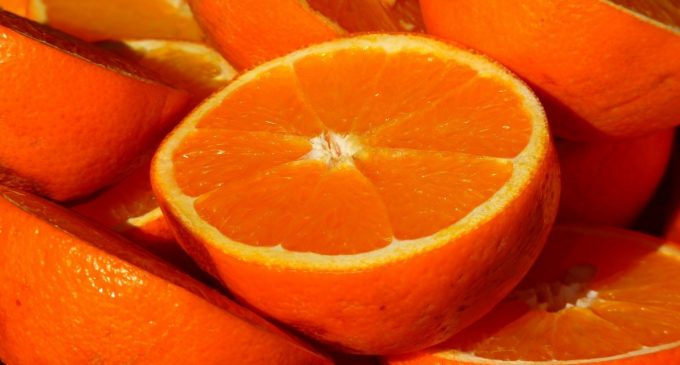Demand For Orange Juice Continues to Fall Despite Dwindling Prices

A fall in demand for orange juice alongside a recovery in processing production has led to lower market prices, IHS Markit’s Agribusiness Intelligence reports. IHS Markit’s Agribusiness Intelligence notes production has risen in Florida and Brazil but falling demand in major markets such as the US and Europe has brought the FCOJ (from concentrate orange juice) price down by USD600/tonne in a year.
Brazil is no longer short of orange juice, with a forecast 2019/20 orange crop of 388 million boxes. Brazilian orange juice yields have improved from a low of just over 300 boxes of fruit to one tonne of FCOJ, meaning in 2018/19 the yield improved to 270 boxes/tonne – however, these are still lower than pre-disease figures seen at the turn of the century.
In contrast, NFC (not from concentrate) prices are rising in the US – in the last report of the season, they were USD8.55 per gallon, up from USD8.19 per gallon in the preceding month. However, demand here still seems to be low in major markets, with sales of NFC orange juice, particularly in the US, continuing to fall. It seems that Western consumers are falling out of love with orange juice, perhaps still leery of its high sugar content. That said, some analysts are anticipating a small increase in US consumption this season to 405 million gallons, mostly driven by renewed interest in cheap reconstituted juice.
Internecine warfare
IHS Markit predicts that Brazilian orange juice prices are going to rise in late 2020, due to Europe needing to rebuild its FCOJ stocks and early indications of a potentially poor 2020/21 harvest – thanks to the damage caused by uncharacteristically hot weather.
China may eventually gain a toehold in Brazil, thanks to its partnership with a major global merchant firm to produce NFC orange and other fruit juices in China, which will be sold through a Chinese chain of coffee shops.
Also, Netherlands-headquartered Prodalim, a fast-expanding global player, is starting to move into Brazil. This is worrying the established Brazilian manufacturers, and at the end of 2019 they started cutting prices, while paying farmers generously for fresh oranges for juicing, to put pressure on these potential interlopers.
Neil Murray, Head of Processed Commodities, IHS Markit’s Agribusiness Intelligence, comments: “This means that any competitor will have to pay more for raw material and slash their margins to compete with the ‘official’ Brazilian price. They are being squeezed at both ends and this is sending a very clear message to the Chinese.”
“The weather conditions in Brazil may also mean that total production will be down to 240 million boxes, although it is a little too early to tell precisely. Brazil’s Citrus Defence Fund says that, despite an increase in the number of trees, the area planted with orange decreased by 1.42% across the Sao Paulo and Triangulo/south-west of Minas Gerais state, citrus belt to 395,764 hectares. The five regions that are part of the agricultural belt, the North (Bebedouro, Altinópolis and Triângulo Mineiro regions) and south-west (Avaré and Itapetininga regions) were the only regions with positive variation in the orange area, 1,384 and 275 hectares, respectively. The less significant loss of orchards in these regions is probably due to low greening rates. According to a survey by Fundecitrus in 2018, the average incidence of greening in the citrus belt is 18.15%, but the north has 5.21% of contaminated trees and the south-west, 8.20%.”
“The question is what effect this will have on the FCOJ price. With 388 mln boxes for Brazil’s 2019/20 harvest, there is plenty of orange juice around right now, but demand remains stagnant or is even shrinking in major markets. European imports are 25% up on last season’s with nearly 285,000 tonnes of FCOJ shipped from Brazil between July and October 2019, but that is largely because it is far cheaper to store orange juice in Europe than in South America. It will be interesting to watch how this plays out in 2020.”
“In theory, this should mean cheaper orange juice on supermarket shelves this year, but that depends on whether the supermarket chains pass on the savings to the consumer. With the 2020/21 harvest looking poor, the orange juice supply will be markedly tighter later this year.”


































